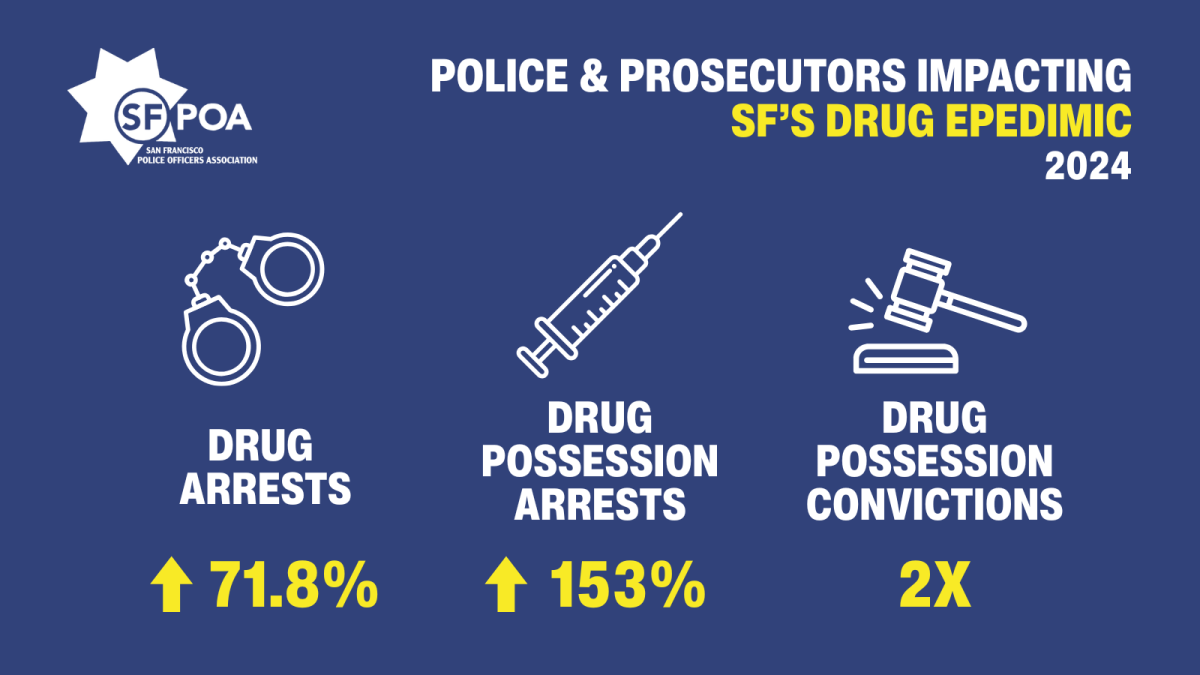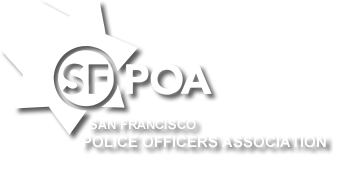By Tracy McCray – POA President
When Willie Sutton was asked why he robbed banks, he replied, “Because that’s where the money is.” A truth so simple it’s shocking. Thinking about San Francisco’s drug and overdose epidemic caused a Willie Sutton reflection. Where can the city gain the most ground in this struggle? On the streets. That’s where the hardest hit addicts are.
Just as Sutton was known for his complex heists, actually pulling off the job ahead of us is no cakewalk. Right now, two major obstacles threaten to end things before the job before we get started: the solution-less, addiction deniers and a bureaucracy whose only definition of change is explained in dimes and quarters.
Our city enjoyed about an 18-month holiday from this Band of Cynics as city residents used their voices and their votes to reclaim their neighborhoods. Police officers went aggressively after drug crimes, and the District Attorney actually prosecuted them. It made a difference you can feel—and see.
Re-Emergence of Ideological Bullshit
Unfortunately, the holiday is over. The addiction deniers and ideologues…they’re baaaaaaack and up to their old tricks again.
You remember these folks. They point to the bodies of the tortured souls dying on our sidewalks and say that’s a housing problem. They argue that clearing a public space for the public to use is harassment and citing someone who is so high they could not take care of their basic bodily functions was an infringement of their civil liberties.
Their aim is to undermine the credibility of police officers and drive wedges between us and the community. They’ll show a picture of an officer next to a sidewalk vendor and state: “police officer stands by, while illegal vendor sells goods,” not mentioning that officers are prohibited from enforcing vendor laws. They’ll complain of “over-policing” and “harassment,” and the very next day critique officers for “not doing anything” about the drug crisis. Then they’ll lie and argue that active policing is a barrier to drug treatment.
What’s their goal? They want SFPD to stop making drug arrests and they want the DA to drop prosecutions. They want San Franciscans to choose between a safe, clean city and a compassionate city capable of helping those in need. It’s a false choice with dangerous implications. They’re wrong, and we have the data to prove it.
Overdose Deaths Plumet in 2024 as Police & Prosecutorial Productivity Peaks; Genuine Drug Treatment Services See Dramatic Increase
We recently analyzed city data, including overdose deaths, drug arrests and prosecutions, utilization of substance use services, and Naloxone kit distribution, among other factors, for the years 2020-2024. What we found was encouraging.
Last year, San Francisco saw the steepest drop in and the lowest number of overdose fatalities (down 21%). Looking further at 2024, the following elements also hit peak levels for our 5-year window (2020-2024):

- Highest year for individuals in city drug treatment programs & withdrawal management programs,
- Highest year for number of arrests for possession/consumption of illegal drugs,
- Highest year for drug possession conviction rates,
- Highest year for Narcan distribution community wide, and
- Tied with 2023 for highest year for SFPD Narcan deployments.
With these efforts, San Francisco experienced a 14% decrease in violent crime and a 29% decrease in property crime in 2024. In fact, compared to U.S. cities of similar size, San Francisco had the largest crime drops in the country.
Data Shows We Can Address Drug Epidemic & Make City Safer
The data shows that we can save lives and improve health outcomes if the City can increase the number of people entering drug treatment programs. The data also shows that, police officers and prosecutors can continue to enforce the law and hold people accountable, creating safer neighborhoods and an environment where the quality of life can be restored without hindering addiction services.
Now is not the time to pump the brakes on progress. Rather, it’s the time to put our foot on the gas. However, we say that with caution. We must avoid the mistakes of the past by attacking the drug crisis as a police-centric mission. The 2nd largest challenge we face in this crisis is getting the bureaucracy to think and work differently.
Wake Up Those “Imagineers”
Police officers are on the street 24 hours a day, 365 days a week, including holidays. We’re typically first on scene for overdose calls, and we’re trained to confront difficult people in the most challenging environments. So, equipping us with Narcan to save lives and having us respond to individuals acting erratically is expedient. But that doesn’t make it right.
We save lives. We stop perpetrators from attacking bystanders, we put our bodies in harm’s way to shield the innocent, and yes, we rush to an overdose call and with confident precision deploy a Narcan boost to bring that person back from the final light. We start every shift ready to do this every day, and we do It well.
We do not save lives, however, by convincing the 23-year locked in the “fentanyl fold” to trust us and take the first step to changing his life. We do not save lives by making snap assessments about the emotional and medical needs of someone in crisis, and we do not save lives by helping that person navigate the city bureaucracy and the maze of non-profits ensuring they get the services they need.
That’s not us. But there are thousands of professionals, experts at this, who are here, and who could and should be doing this.
We’ve spent years listening to appeals to “reimagine policing,” and we have. We’ve pushed for “alternative responses” to non-police calls, expanding de-escalation training and crisis intervention training. However, the Imagineers need to finish their job if we hope to make true headway on this issue.
We must reimagine how we deliver social services. As experts on the streets, we can state with full confidence that if our service providers are not on the sidewalk after the streetlights go on, we’ll never truly boost those treatment numbers. Those folks are not making it to office hours.
San Francisco police officers have no bigger wish than to have psychologists, social workers, and counselors as our partners on the street. Every day. Twenty-four hours a day, three hundred sixty-five days a week, including holidays.
It’s time to ditch banker’s hours, desk chairs, and casual Fridays. Grab some boots, an extra-large coffee, and a jacket, and hit the street. We’ll see you after midnight roll call.

Comments are closed.